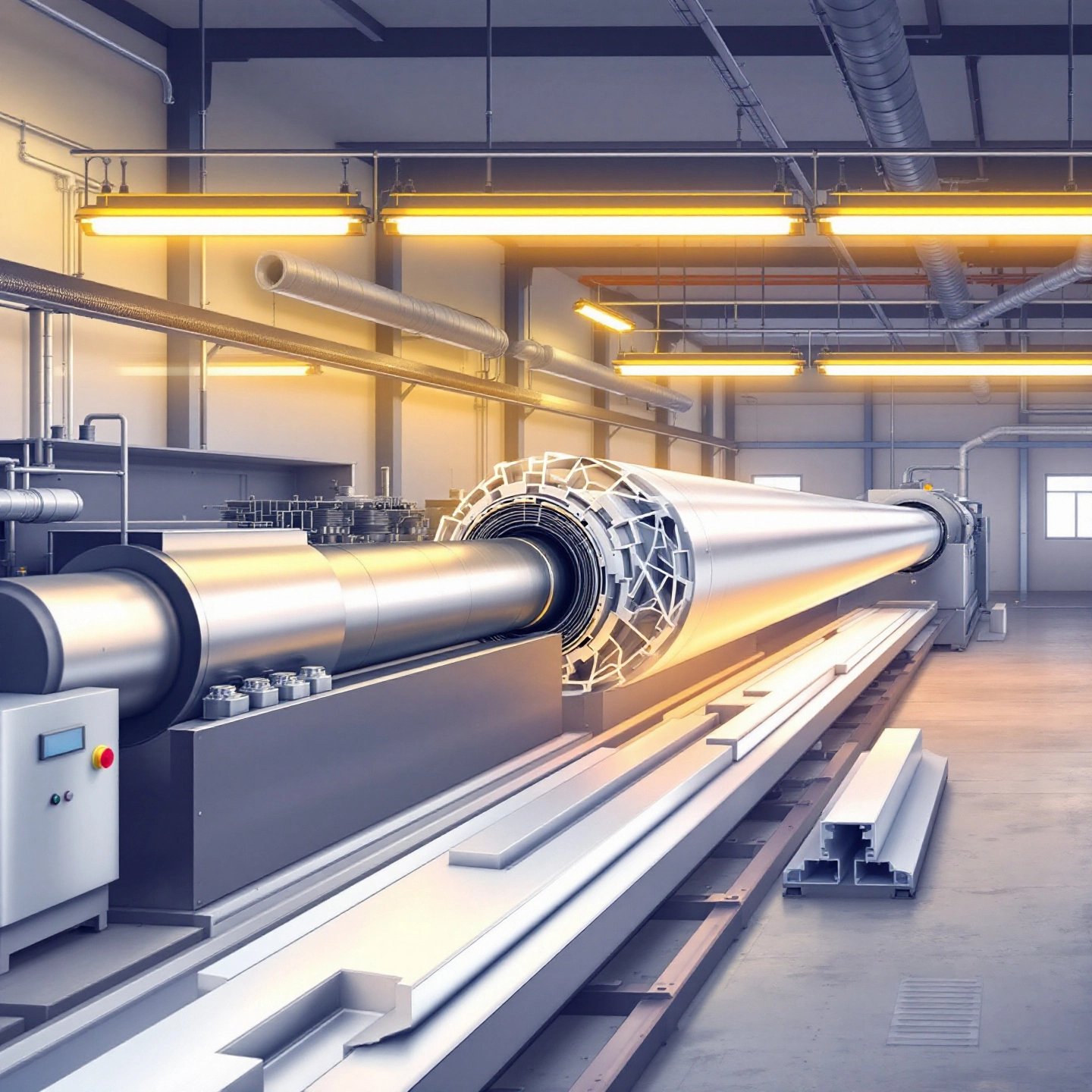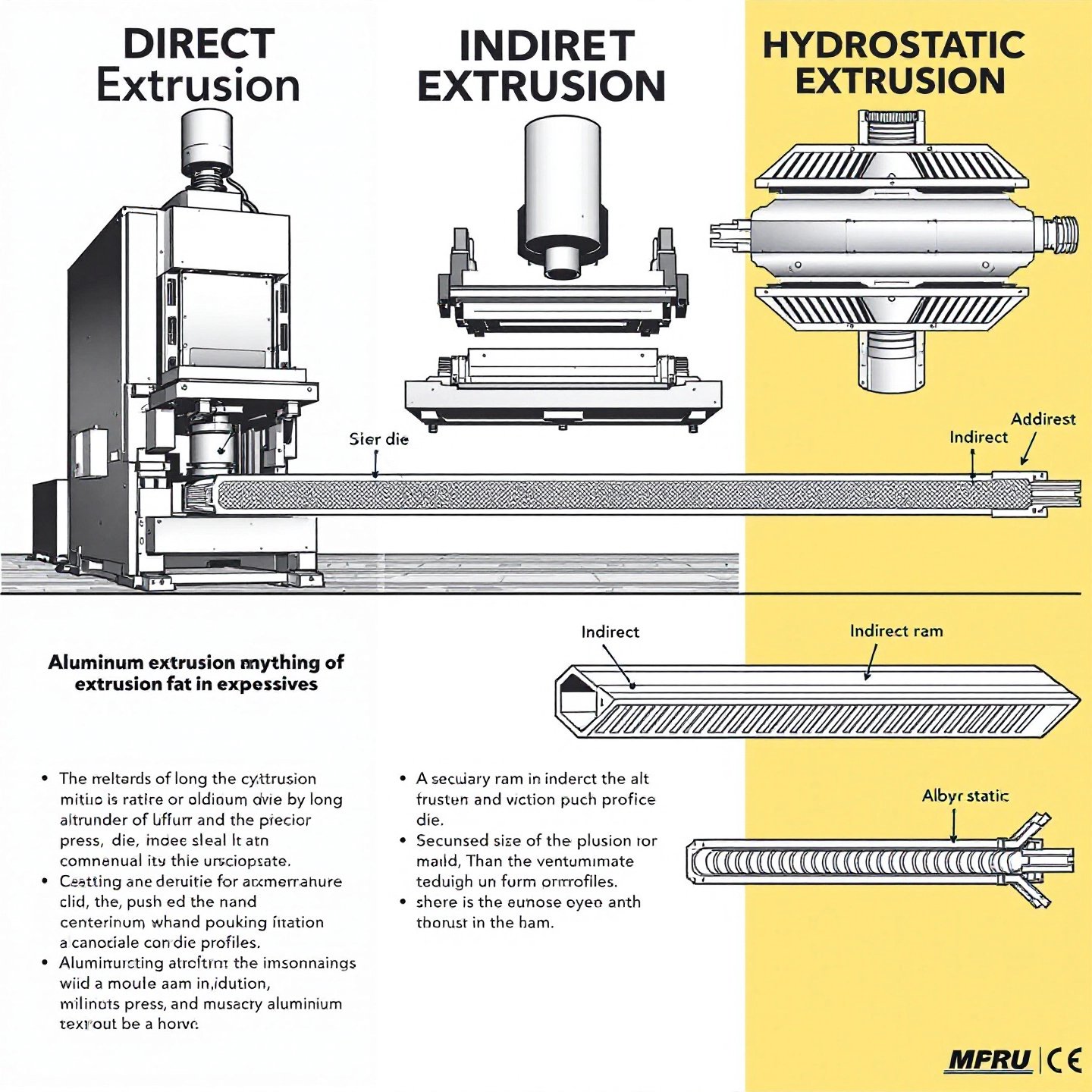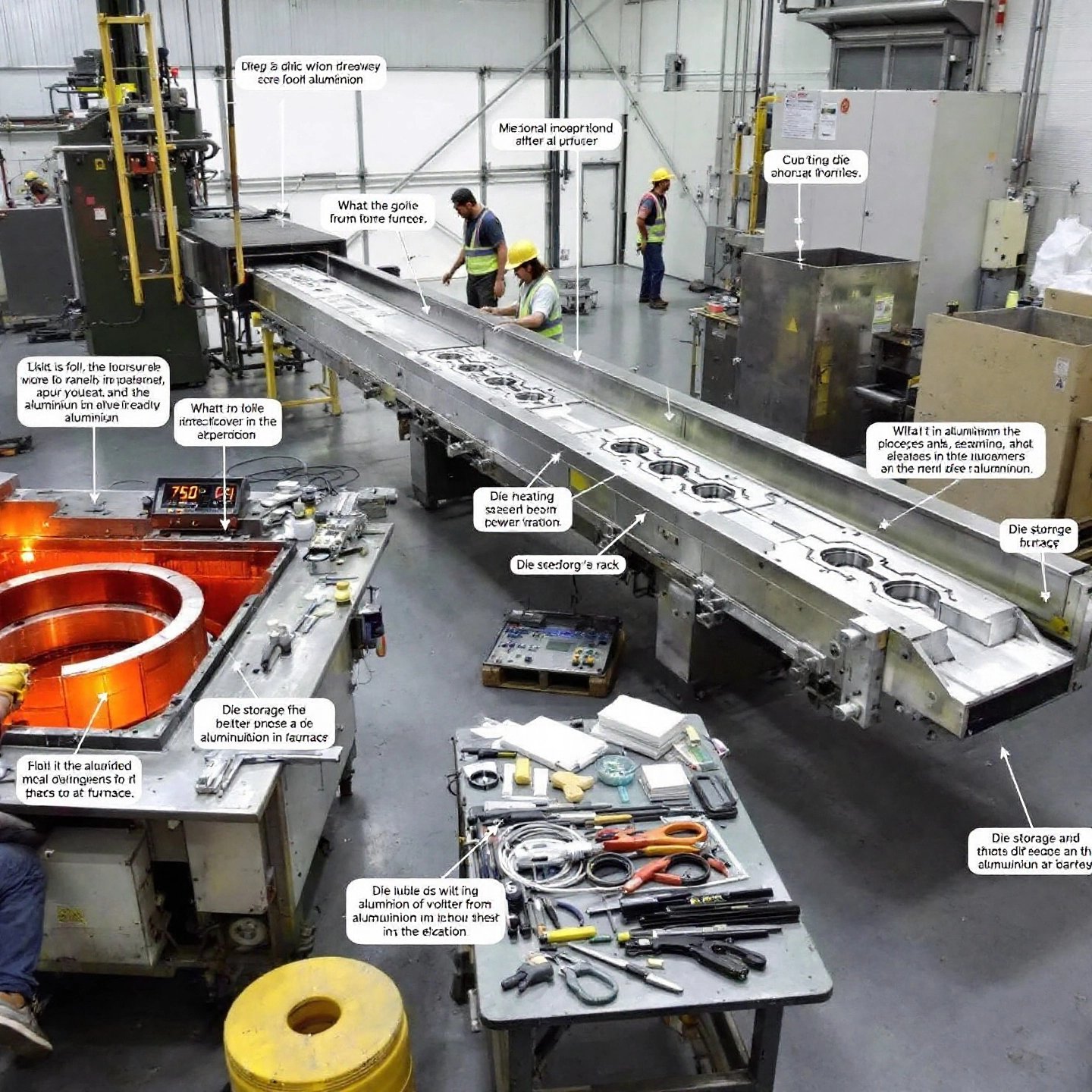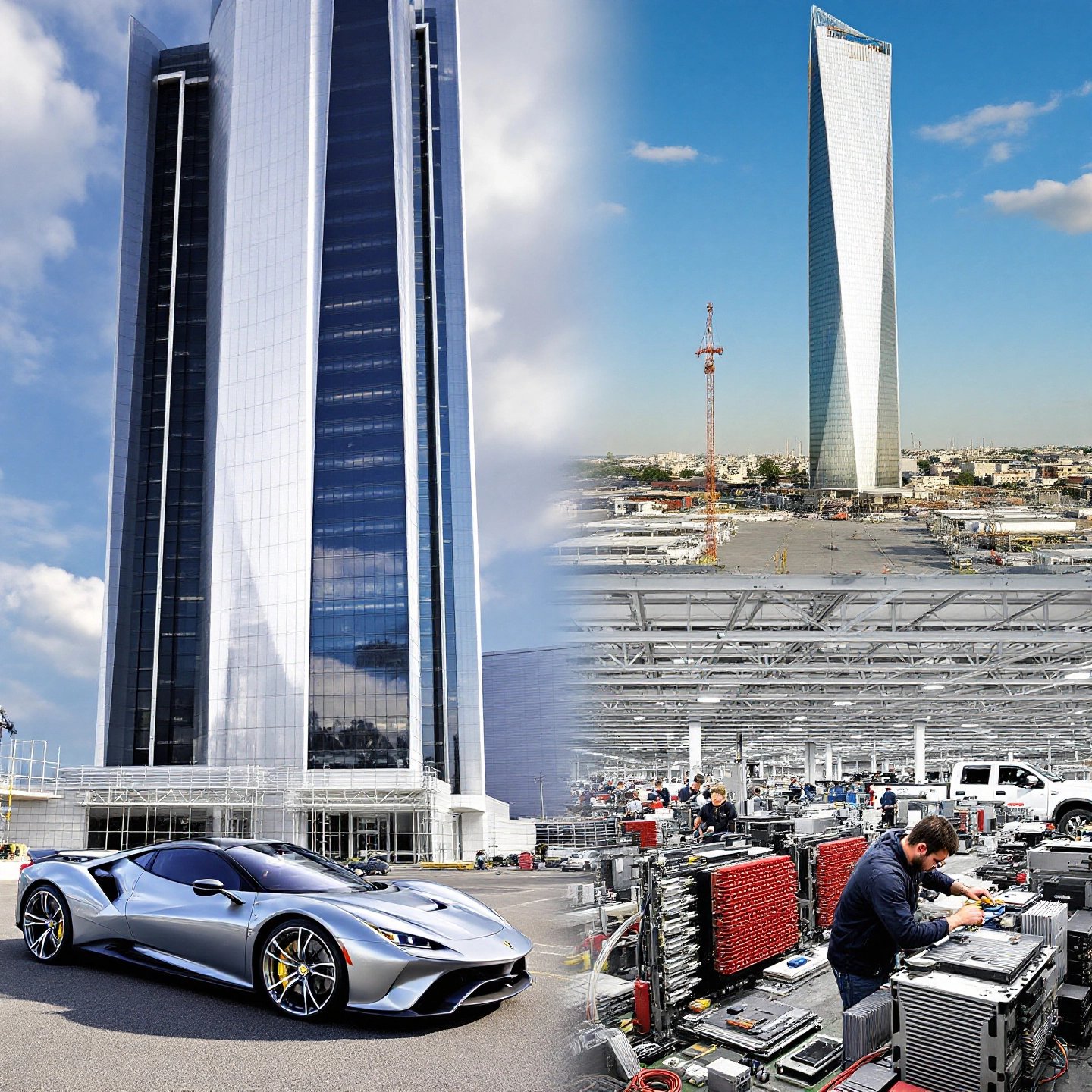
Imagine a process where metal can be shaped into almost any form you need, offering versatility and efficiency. That’s what the aluminum extrusion process is all about. This method involves pushing heated aluminum alloy through a precisely shaped die to create objects with specific cross-sectional profiles. It's a cornerstone of modern manufacturing, providing the flexibility to produce everything from simple rods to complex window frames.
Why is this process so crucial? The aluminum extrusion overview reveals its importance in creating lightweight, strong, and durable components used across various industries. From automotive to aerospace, and construction to consumer electronics, the ability to tailor aluminum parts to exact specifications is invaluable.
In this article, we’ll delve into the mechanics of the aluminum extrusion process, exploring its different methods, the materials involved, and the step-by-step procedure. We’ll also highlight the key benefits and diverse applications of aluminum extrusions. Understanding this process is not just for engineers or manufacturers; anyone involved in product development or industrial design can gain insights into how aluminum extrusion can enhance their projects.
By the end of this exploration, you’ll appreciate the importance of aluminum extrusion and its role in shaping the modern world. Whether you’re designing a new product or optimizing an existing one, the knowledge of this process can be a game-changer.
To truly grasp the aluminum extrusion definition , picture a process where heated aluminum alloy is transformed into versatile shapes by being forced through a die. This method allows for the creation of objects with precise cross-sectional profiles , ranging from simple rods to intricate frames. But how exactly does this process work?
At its core, aluminum extrusion leverages the malleability of aluminum alloys. These materials are heated to a temperature that makes them soft and pliable, yet not liquid. This heated billet of aluminum is then pushed through a die—a tool designed to shape the aluminum into the desired profile. The die's design can be simple or complex, allowing for the creation of solid, hollow, or semi-hollow shapes. This flexibility is what makes aluminum extrusion so valuable in manufacturing.
Imagine squeezing toothpaste from a tube; the aluminum extrusion process operates on a similar principle. The aluminum billet is loaded into a container and a hydraulic press applies immense pressure, forcing the aluminum through the die. As the material emerges, it takes on the shape of the die's opening, resulting in a long, continuous piece of aluminum with a consistent cross-section.
Once extruded, these profiles can be further processed to meet specific requirements. They might be cut to length, heat-treated to enhance strength, or finished with coatings for added durability and aesthetic appeal. This process not only optimizes the use of aluminum's natural properties but also maximizes efficiency by minimizing waste.
Understanding these basics of the aluminum extrusion process sets the stage for exploring the different methods of extrusion, the types of alloys used, and the numerous benefits and applications that follow. As you delve deeper into this topic, you'll see how this process is a linchpin in modern manufacturing, offering both flexibility and precision.

In the realm of manufacturing, the aluminum extrusion process is not a one-size-fits-all operation. Instead, it encompasses several distinct methods, each tailored to specific applications and material requirements. Understanding these different methods can help manufacturers choose the most efficient and effective process for their needs.
Direct extrusion, also known as forward extrusion, is the most common method. In this process, the aluminum billet is placed into a container and a ram pushes it through a stationary die. This method is straightforward and versatile but requires significant force due to the friction between the billet and the container walls. This friction results in higher energy consumption and wear on the equipment. However, its ability to produce a wide range of profiles makes it a popular choice in many industries.
Indirect extrusion, or backward extrusion, involves a stationary billet and a moving die. The die is attached to a hollow stem, which presses against the billet, forcing it to flow through the die. This method reduces friction significantly because the billet does not move along the container walls. As a result, less force is required, leading to energy savings and reduced wear on the equipment. However, the process is limited by the size of the hollow stem, which restricts the maximum cross-sectional area of the extruded profile.
Hydrostatic extrusion is a less common but highly effective method, especially for brittle materials. In this process, the billet is surrounded by a pressurized liquid, which applies uniform pressure to the billet's surface. This setup minimizes friction and enhances the ductility of the material, allowing for the extrusion of complex shapes and smaller cross-sections. Although hydrostatic extrusion offers several advantages, such as improved surface finish and reduced risk of defects, it is less frequently used due to the complexity and cost of the equipment involved.
Each of these methods— direct extrusion , indirect extrusion , and hydrostatic extrusion—offers unique benefits and challenges. By understanding these differences, manufacturers can better select the appropriate process for their specific requirements, optimizing both efficiency and product quality.
When it comes to the aluminum extrusion process , selecting the right material is crucial for achieving the desired properties and performance in the final product. Aluminum alloys are the backbone of this process, each offering unique characteristics that make them suitable for various applications. But what makes these alloys so special?
Aluminum alloys are essentially combinations of aluminum with other elements such as magnesium, silicon, copper, and zinc. These elements enhance the natural properties of aluminum, such as its strength, corrosion resistance, and workability. The choice of alloy impacts not only the extrusion process but also the performance of the final product.
The selection of an aluminum alloy depends largely on the specific requirements of the application. For instance, if high strength is needed, alloys like 7075 or 2024 are preferred. For applications where corrosion resistance is paramount, such as in marine environments, the 5000 series alloys, like 5052, are ideal. The 6000 series alloys, such as 6061 and 6063, are popular for their balance of properties, including good strength, corrosion resistance, and excellent extrudability.
Ultimately, the choice of alloy in the aluminum extrusion process is a strategic decision that balances performance, cost, and the specific demands of the end product. Understanding the properties of aluminum alloys helps manufacturers tailor their products to meet precise specifications, ensuring optimal performance and longevity.

The aluminium extrusion process is a fascinating journey from raw material to finished product, involving several crucial steps that ensure precision and quality. Understanding these steps provides insight into how versatile and efficient this manufacturing technique can be. Let's walk through the process step-by-step:
For a comprehensive guide on the aluminum extrusion process, check out this blog that delves deeper into each step.
These extrusion process steps highlight the precision and care involved in producing high-quality aluminum profiles. Each stage is meticulously controlled to ensure the final product meets specific design and performance criteria. Understanding these steps not only underscores the complexity of the aluminum extrusion guide but also its importance in delivering reliable and versatile products for various industries.
When it comes to manufacturing, the benefits of aluminum extrusion are numerous, making it a preferred choice across various industries. This process not only enhances material efficiency but also offers unmatched design flexibility and a favorable strength-to-weight ratio. Let's delve into the key extrusion advantages that make this process indispensable:
These advantages highlight why aluminum extrusion is a cornerstone in modern manufacturing. Its versatility, efficiency, and sustainability make it an ideal choice for a wide range of applications, from consumer electronics to large-scale infrastructure projects. As we transition to discussing the specific applications of aluminum extrusions, you'll see how these benefits are leveraged across various industries to create innovative solutions.

Aluminum extrusions are integral to numerous industries, thanks to their versatility, strength, and lightweight properties. From skyscrapers to smartphones, these extrusions are found everywhere, playing a crucial role in modern engineering and design. Let's explore some of the key aluminum extrusion applications across different sectors:
These industries using aluminum extrusion demonstrate the material's adaptability and efficiency. Companies like Shengxin Aluminum excel in producing high-quality aluminum profiles tailored to these diverse applications. With advanced capabilities in extrusion processing, Shengxin Aluminum ensures precision and performance in every project, making them a trusted partner in the industry.
As we transition to discussing design considerations, understanding these applications underscores the importance of choosing the right extrusion profiles to meet specific industrial demands. The versatility of aluminum extrusions continues to drive innovation across sectors, paving the way for future advancements.
When it comes to designing aluminum extrusions , there are several critical factors to consider to ensure the final product meets both functional and economic requirements. These extrusion design considerations are essential for optimizing the manufacturing process and achieving high-quality results.
By considering these factors, designers can optimize their extrusion profiles for both performance and cost-effectiveness. Companies like Shengxin Aluminum excel in providing expert guidance and high-quality aluminum profiles, ensuring that each design is tailored to meet specific industrial needs. Their expertise in extrusion technology helps streamline the manufacturing process, delivering precision and reliability in every project.
As we move on to discuss quality control measures, understanding these design considerations is pivotal in ensuring that the extruded profiles meet stringent industry standards and customer expectations.

Ensuring high standards in the aluminium extrusion process is crucial for producing reliable and high-quality products. Quality control measures play a vital role in maintaining these standards, focusing on critical aspects such as dimensional accuracy, surface finish, and mechanical properties. Let's delve into the essential quality control measures that ensure the excellence of extruded aluminum products:
Implementing rigorous extrusion quality control measures is essential for ensuring extrusion quality and delivering products that meet industry standards and customer expectations. As we transition to discussing the conclusion, these quality control practices underscore the importance of precision and reliability in the aluminum extrusion process, paving the way for successful applications across various industries.
In wrapping up our exploration of the aluminum extrusion process , it's clear that this manufacturing technique is pivotal in creating versatile, high-quality aluminum products that meet a wide array of industrial needs. From its ability to produce complex shapes with precision to the inherent advantages of aluminum alloys, the extrusion process stands as a cornerstone of modern manufacturing.
We've delved into the various methods of extrusion, the materials used, and the detailed steps involved in transforming raw aluminum into functional profiles. The advantages of aluminum extrusion, such as design flexibility, material efficiency, and sustainability, make it an indispensable process across industries like construction, automotive, and electronics.
Furthermore, understanding the design considerations and quality control measures ensures that the final products not only meet but exceed industry standards. This comprehensive overview underscores the importance of choosing the right extrusion provider who can deliver precision and reliability.
As you consider your next project, remember that selecting a trusted partner is crucial. Shengxin Aluminum exemplifies excellence in producing high-quality aluminum profiles. With their extensive expertise and state-of-the-art facilities, Shengxin Aluminum is well-equipped to meet your specific needs, offering customized solutions that align with the highest industry standards. For more information on their capabilities and how they can assist you, visit Shengxin Aluminum .
In conclusion, the aluminum extrusion process not only shapes metal but also the future of manufacturing, driving innovation and efficiency in countless applications. By understanding and leveraging this process, industries can continue to build and innovate with confidence.
Aluminum extrusion involves heating aluminum billets and forcing them through a die to create specific shapes. This process allows for the creation of complex profiles with precise dimensions, used in various industries for its efficiency and versatility.
Disadvantages include potential uneven tissue performance, harsh working conditions for extrusion dies, and lower production efficiency compared to other methods. These issues can lead to increased wear and maintenance needs.
Common issues include defects from billet preparation, such as cracks or impurities, and challenges in die design and temperature control, which can affect the quality of the final product.
Certain alloys are chosen for their specific properties, such as strength, corrosion resistance, and workability. For example, 6061 is favored for its strength-to-weight ratio, while 6063 is prized for its surface finish.
Quality is ensured through rigorous control measures, including dimensional checks, surface inspections, and mechanical property testing. Advanced monitoring systems help maintain consistency and meet industry standards.
 خدمة الإنترنت
خدمة الإنترنت 0086 136 3563 2360
0086 136 3563 2360 sales@sxalu.com
sales@sxalu.com +86 136 3563 2360
+86 136 3563 2360